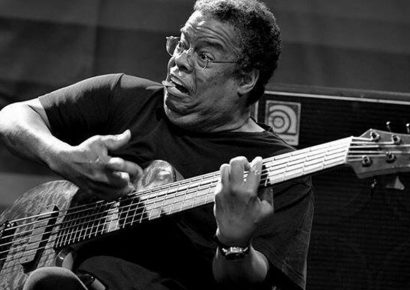Figure A is a lick based on Am7 (using A Dorian). You might try using fingers 1 2 4 on the 4th and 3rd strings and then moving to your 1st finger for the F# in the 7th fret on the 2nd string. This line creates a nice intervallic jump and some movement up the neck. Of course, this lick isn’t just restricted to Am7. Try it over other diatonic chords from G Major (the key that A Dorian comes from), such as D7 or C.
Figure B again uses A Dorian to cover some extra range. Try to use your little finger for the E in the first bar and then roll your 2nd finger across both G and C (on the 2nd and 1st strings). Start slow and then build speed. You might like to experiment with picking and hammer ons/pull offs for different articulations too.
Moving to F# Dorian, Figure C starts on low F# in the 2nd fret on the 6th string and works its way up to high D# in the 16th fret on the 2nd string. Like the previous example, you should try both picking and hammer ons/pull offs to hear the difference in articulation possibilities. Some of the movements can also involve slides, which can add to the legato sound. Many players use slides and quick position shifts to add to the sound and intervallic possibilities.
Trying to increase creativity and break out of the typical box shapes and fingerings that you normally use is the key here. I can think of plenty of lines/solos/phrases that have hooked me on the first listen, but once I’ve dug a little deeper or transcribed some of it, I’ve realised that it’s not actually anything completely crazy note-wise – it’s just the phrasing/rhythm/intervals chosen that make it sound cool. And that’s the beauty of music – there’s only 12 notes, it’s how you choose to play them and where you choose to place them that matters.
Next time you’re noodling around improvising, play a lick or start a phrase (something short, only a couple of notes), then stop and deliberately make a note choice that doesn’t feel/sound typical to you – it might involve jumping up the neck or a few strings over – and then continue your phrase. You’ll be surprised how easy it is to come up with new sounds and ideas when it’s not the same old note sequence or note order in your scales/riffs/licks.










